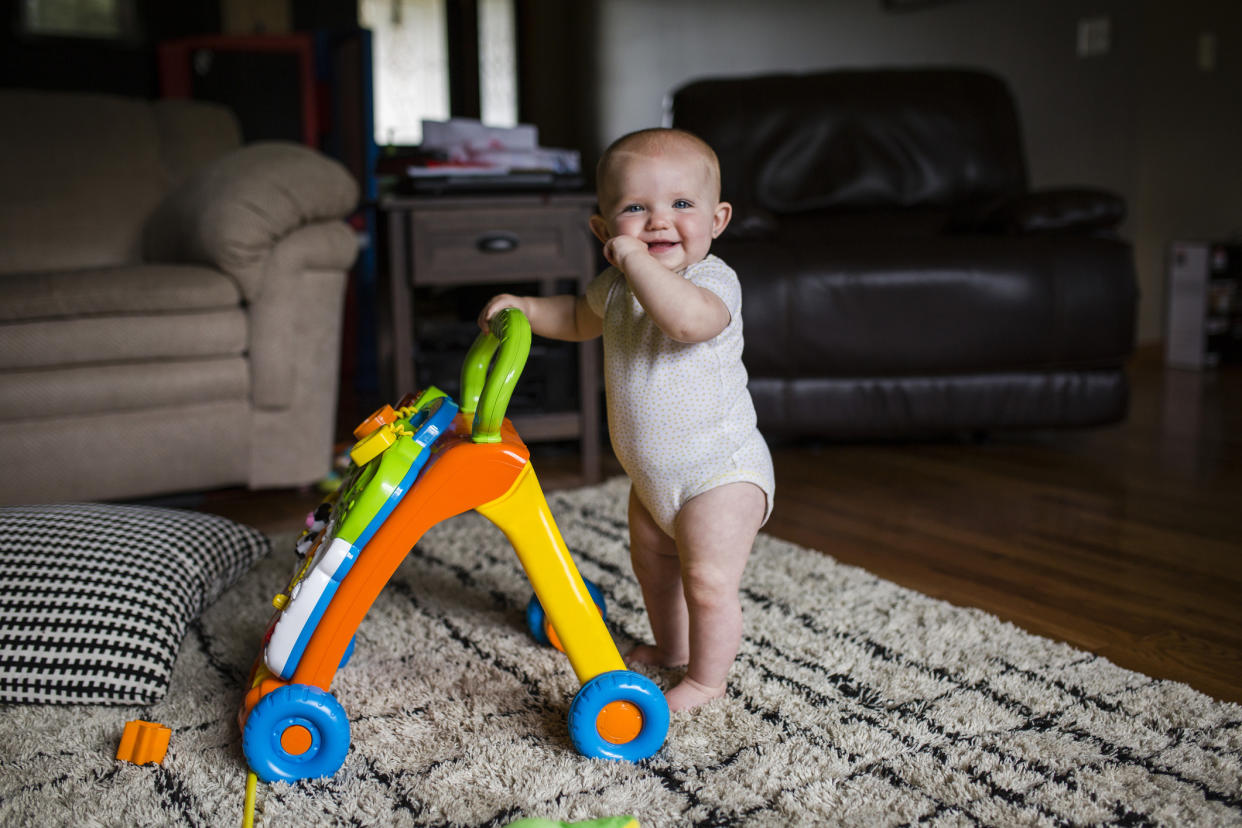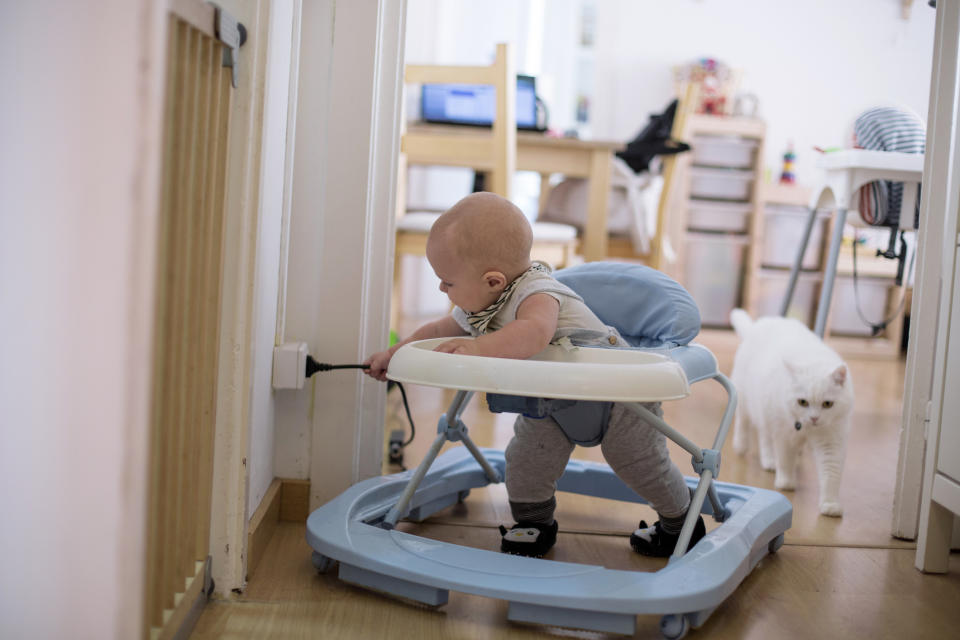Are baby walkers safe?

Baby walkers are popular among parents for encouraging little ones to start walking, but some concerns have been raised about their safety. Here's what parents need to know.
If you're looking for the best baby walker, your little one has probably mastered sitting and crawling and seems eager to start walking. However, baby walkers receive mixed reviews due to safety concerns and their impact on child development. So, are baby walkers safe?
Are baby walkers safe?
Unlike push toys which can support a child learning to walk, traditional baby walkers have a seat for babies to sit in, a tray with toys in front, and four wheels allowing them to move around by pushing off the ground with their legs. This enables babies to move before they can walk unaided.
However, some experts advise against using sit-in baby walkers, and they are even banned in Canada due to safety concerns. A significant issue is that excessive use can lead to improper leg development. The design of the walker encourages babies to stand in an unnatural position, often on their tiptoes, which can delay walking. Additionally, babies sitting in walkers do not learn to support their weight or master balance.
Despite being marketed as a way to encourage early walking and movement, sit-in baby walkers can delay important developmental milestones. They can force a baby’s muscles and joints to bear weight they may not be ready for, potentially hindering proper growth and development.
What about injuries?
Another reason people debate the safety of baby walkers is the injuries they can cause. Sit-in walkers raise a baby's height, giving them access to potentially dangerous areas such as kitchen stoves with hot food, cupboards with poisonous materials, or pools they could fall into. If a baby gets into difficulty, a walker can trap them in place and prevent escape. Accidents involving sit-in baby walkers include infants falling down stairs while in the walker. Babies can also pick up too much speed, increasing the likelihood of injury from moving too fast.

Jennie Lannette Bedswort, a social worker and therapist, tells us: “As a provider supporting healthy child development, I recognise parents often feel immense societal pressure to help children meet mobility milestones as quickly as possible. This fuels interest in devices offering a potential head start. However, emotional desires for achievement should not outweigh considerations for safety and evidence-based growth. Rushing progress can paradoxically delay it in the long run while introducing unnecessary hazards.”
Jennie adds that some parents may choose to still opt for a baby walker, as there have been design developments which make them more safe. “Manufacturers claim new safety standards like wider bases, friction strips to slow movement, and restricting access to wheels have led to substantial decreases in injuries over the past decades," she adds
“Every child journeys at a unique pace. While supervision mitigates certain risks of aids like walkers, potential still exists for trauma. Perhaps we should learn to embrace the phrase ‘they will walk when they are ready.’ Patience pays off with children, just as the sprouting plant grows strongest when given space to bloom without pulling.
“In conclusion, there are, of course, arguments on both sides. Ultimately, it comes down to parental discretion to weigh the pros and cons and make an informed decision about what they feel is safest for their baby. Supervised use of a baby walker in safe environments may also help to mitigate some risks.”
What can you use instead of a baby walker?
Consider using a push walking toy - we recommend the Haus Projekt Baby Walker which is the top-rated product in our baby walkers buying guide - or an activity centre with a stationary or rotating seat rather than wheels. Above all, always supervise your child as they play.
If you have done your research and choose to use a baby walker, always prioritise safety. Kirsty Carroll, a parenting expert at Kiddies Kingdom, advises that “baby walkers should be used carefully to avoid delaying development”. She recommends making sure your baby’s feet are flat on the floor rather than being on their tiptoes when using one.
However, for your baby to develop at the right pace, no special equipment is needed. Simply giving them time on the floor to practice rolling, sitting, crawling, balancing, and pulling themselves up to stand is sufficient to set them on the path to independent walking.
Now that you've established whether baby walkers are safe, have a look at our guide to the early stages of child development.

 Yahoo News
Yahoo News 
